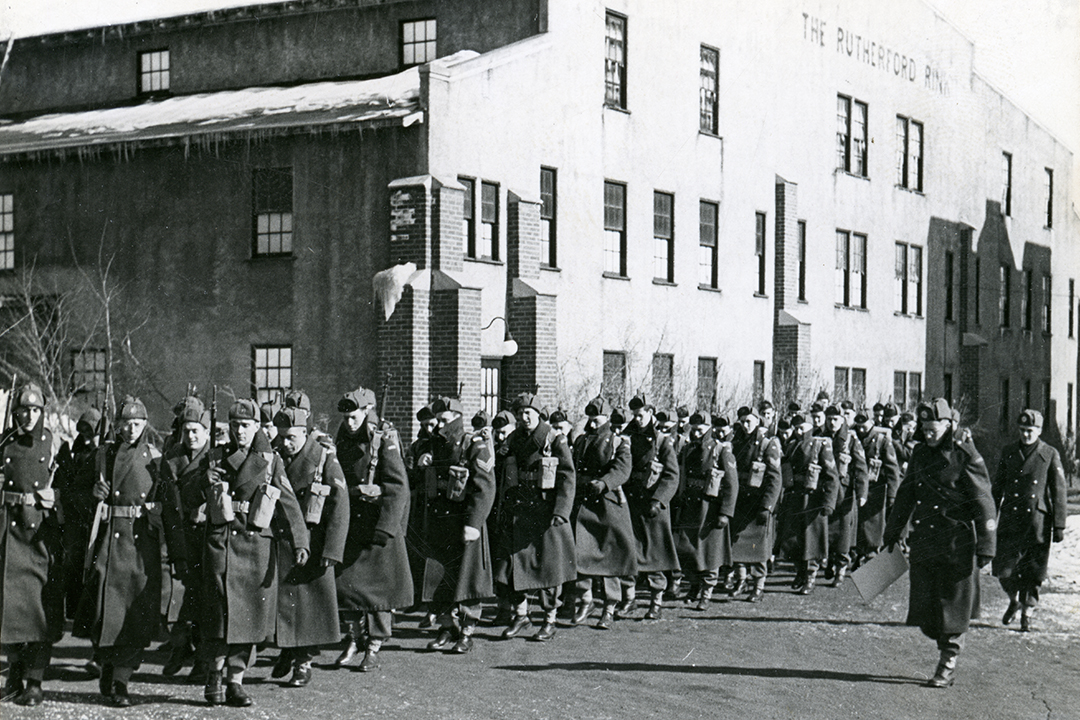
Canadian forces have long history at U of S
The university and the city of Murray Scharf’s youth is very different to the one today, once a central hub of military service members training for the Second World War and living shoulder-to-shoulder with the local populace.
By HenryTye GlazebrookAnd at the heart of this relationship was The Cavern, a speakeasy of sorts in the basement of a building in downtown Saskatoon where members of Canada’s military personnel and civilians would gather to dance and let off steam.
“You’d have the engagement of university students on the social side meeting with these groups that were here from all over the world to train at Dundurn, or in the British Commonwealth Air Training Plan (based at the airport),” said Scharf, a former military man himself and retired dean of the College of Education at the University of Saskatchewan. “It was a big thing. That was the social centre. A meeting place that even led to marriages with people from all over the world.”
The Cavern was a byproduct of a close dovetailing of the Prairie city and the country’s armed forces. Scharf believes that bond was solidified in 1929 when the university became home to the Canadian Officers Training Corps (COTC). The program, initially established in Saskatoon in 1921, was a means of increasing infrastructure for, and membership in, armed services after the First World War.
“They started the Canadian Officers Training Corps at the universities so that they could have a cadre of officers available to staff the armed services if a war came about,” Scharf said.
The COTC was made up of 10 faculty and administrative members and at least 150 students each year, the latter of whom, in addition to their regular classes, were trained to exit the program as officers in Canada’s army, navy or air force. The operation was centred in Qu’Appelle Hall—the former residence building for male students—where over the years countless young students would take part in military drills, parades and marksmen challenges.
“In the basement of Qu’Appelle Hall they had a rifle range for .22’s,” Scharf said. “They had competitions with the other COTC’s from across Western Canada. They would send their marksmen here and they would have a shooting competition right there in the basement.”
The COTC proved transformative, leading to an influx of construction projects for military facilities that would later be rolled into university buildings—Scharf cited a gym and the commerce building as structures first established for military use—as well as a culture of national pride and military accomplishment that stretched well past the war.
“After the war, the controller was from the army, the registrar was from the army. The administration of the university became dominated by veterans from the armed services,” Scharf said.
Over the years, the COTC played a part in helping make Saskatoon into the city it is today, building on military connections in the community as pilots trained at the airport during wartime and soldiers drilled south of the city at Camp Dundurn, which remains an active base to this day.
But for Scharf, who himself took part in the COTC beginning in 1956, the program is just as notable for the mutually beneficial association that was formed with the U of S, making university a financial reality for countless young minds and in the process providing the institution with the students necessary to support its expansion and the elaboration of the college structure.
“They were getting a cadre of full-time students who were guaranteed their funding for three or four years,” Scharf said. “That gave us the stability base to expand the university and differentiate, providing the critical mass of students and the income during that time between the Depression and going into the war, to make the U of S viable to operate.”

